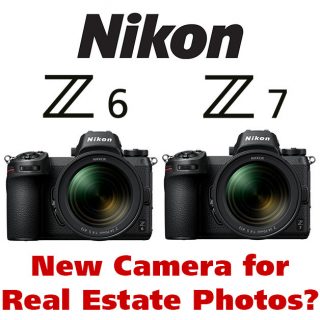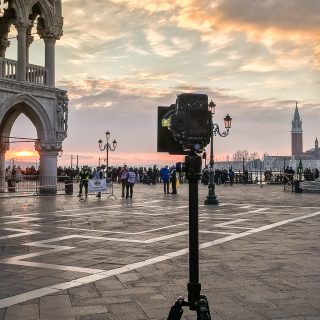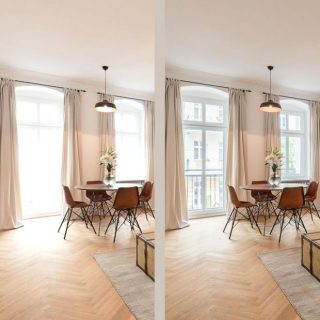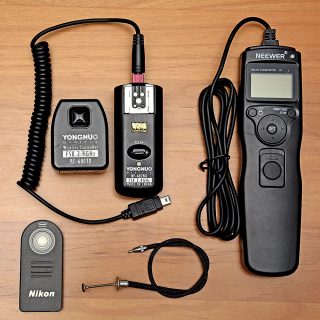PrimePhoto Blog » English
 Nikon unveiled its new full-frame mirrorless cameras last Thursday: the Nikon Z6 and Z7. These models are supposed to strike fear into the heart of Sony, currently being market leader in this camera segment with their successful Alpha 7 series. Now, since all the show-smoke had vanished, it is time for a little analysis on whether the cameras can be the new stars for real estate photographers.
Nikon unveiled its new full-frame mirrorless cameras last Thursday: the Nikon Z6 and Z7. These models are supposed to strike fear into the heart of Sony, currently being market leader in this camera segment with their successful Alpha 7 series. Now, since all the show-smoke had vanished, it is time for a little analysis on whether the cameras can be the new stars for real estate photographers.
So much in advance: Nikon has presented two very powerful cameras promising first class image results, and obviousely they do deliver great photos according to the first (independent) images shown.
But, what about real estate photography? Can real estate professionals benefit from the new cameras?
Further down in this post I will also refer to some of the negative critique from the first reviews to find out how far these are relevant to real estate photography.
Meanwhile this article contains four updates, which became known after it had been published.
Read on …
 Whenever it comes to image editing during my real estate photo workshops, one of the participants always raises the question of how to swap the sky quickly. Finally, objects displayed in bright weather would sell better. This is understandable, especially since we feel warmth and light as pleasant and therefore a new living environment or a new investmen tlooks more beautiful in sunshine.
Whenever it comes to image editing during my real estate photo workshops, one of the participants always raises the question of how to swap the sky quickly. Finally, objects displayed in bright weather would sell better. This is understandable, especially since we feel warmth and light as pleasant and therefore a new living environment or a new investmen tlooks more beautiful in sunshine.
Photoshop Helps Perfect with Compositing
Conducting such a project is fairly easy with current software products. In technical jargon this blending of different image elements is called „compositing“. If you know, for example, three tools in Photoshop (layers, layer style color range, masks), this is also a fast procedure. Many real estate professionals also believe that their existing software can do so at the touch of a button. However …
Read on …
 If you want to photograph the exterior of a property in a busy place, people will inevitably run into the picture. Rolling or floating vehicles are also part of the frame. But you want to remove people and objects, because that brings two problems.
If you want to photograph the exterior of a property in a busy place, people will inevitably run into the picture. Rolling or floating vehicles are also part of the frame. But you want to remove people and objects, because that brings two problems.
- These objects may work against your intended static image statement (for example, „Facade of house xy“).
- The rights of privacy of people in the picture might be infringed.
You could stamp out these troublemakers piece by piece in post-production. But there is a much simplier solution on hand already while exposing the image. Earlier this month, I attended an architectural photography workshop in Venice and revived the old technique of long exposure under harsh conditions. Read here, how it works.
Read on …
 The success of real estate images depends on showing rich details. Bright window light or shadows often ruin them. For real estate photos HDR can help.
The success of real estate images depends on showing rich details. Bright window light or shadows often ruin them. For real estate photos HDR can help.
What is HDR?
The abbreviation HDR is familiar to most non-photographers from their smart phone. The photo app of modern devices has an HDR option, with which can make these details a little more visible within certain limits. HDR is the abbreviation of the technical term „High Dynamic Range“. The HDR method is also found under the name „Dynamic Range Increase“ (DRI). The dynamic range describes the light zones of an image between light and dark, in which details are visible.
Even modern UHD televisions with OLED technology (or QLED at Samsung) advertise with new high dynamic range vision.
Without HDR there is the following dilemma: If it is too light (almost white) or too dark (almost black), it becomes hard to recognize any details. For real estate photos, this is often the case: outdoor facilities shine in daylight, and indoors there are deep shadows.
Read on …

A blurry image is a no-go for every real estate photo. Anyone who seriously takes photos of real estate should therefore use a remote control. In low light situations, like often found indoors, long time exposures are needed. To create clear images, the camera must always stand absolutely still when released. Even touching the release button by hand causes unwanted camera shake that can ruin a photo. Therefore, it makes sense to trigger the camera contact-free, even if it sits on a tripod.
Depending on the camera type, there are different accessories that help to create an image without touching the camera when shooting. With these little helpers, you can achieve a stunning improvement in image quality for a small price.
At the end of this post you will find some product recommendations for real estate photography.
Read on …
 Nikon unveiled its new full-frame mirrorless cameras last Thursday: the Nikon Z6 and Z7. These models are supposed to strike fear into the heart of Sony, currently being market leader in this camera segment with their successful Alpha 7 series. Now, since all the show-smoke had vanished, it is time for a little analysis on whether the cameras can be the new stars for real estate photographers.
Nikon unveiled its new full-frame mirrorless cameras last Thursday: the Nikon Z6 and Z7. These models are supposed to strike fear into the heart of Sony, currently being market leader in this camera segment with their successful Alpha 7 series. Now, since all the show-smoke had vanished, it is time for a little analysis on whether the cameras can be the new stars for real estate photographers.
 Oliver M. Zielinski - 27. August 2018 - in:
Oliver M. Zielinski - 27. August 2018 - in:  Whenever it comes to image editing during my
Whenever it comes to image editing during my If you want to photograph the exterior of a property in a busy place, people will inevitably run into the picture. Rolling or floating vehicles are also part of the frame. But you want to remove people and objects, because that brings two problems.
If you want to photograph the exterior of a property in a busy place, people will inevitably run into the picture. Rolling or floating vehicles are also part of the frame. But you want to remove people and objects, because that brings two problems. The success of real estate images depends on showing rich details. Bright window light or shadows often ruin them. For real estate photos HDR can help.
The success of real estate images depends on showing rich details. Bright window light or shadows often ruin them. For real estate photos HDR can help.